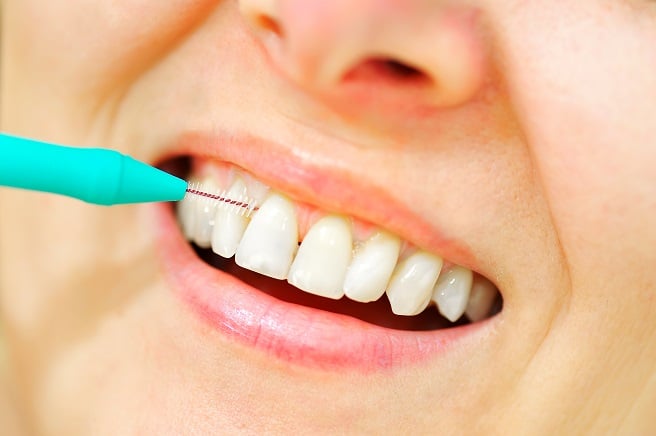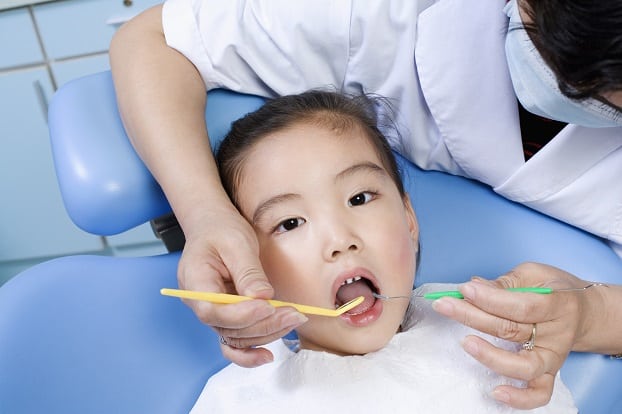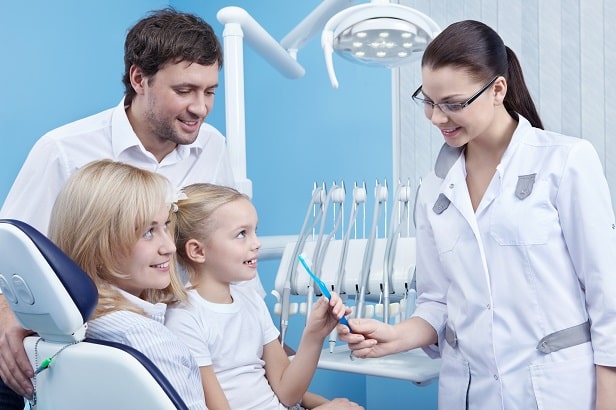Dental caries or cavities are quite nefarious because they’re the permanent damage to the hard surface of the teeth—also known as enamel—that grow over time from tiny openings or holes created by acidic bacterial waste products.
Cavities are the indication of tooth decay. Many factors cause the enamel of your permanent teeth to degrade, but it mostly roots from bad dental hygiene.
Page Contents
Dental Cleanup is a Must
One of the most common health problems is tooth decay. They’re common among kids, teens, and seniors specifically. However, anyone can end up getting cavities and tooth decay on their teeth, including babies.
-
Children and Teenagers: It’s mostly seen in children who must learn dental hygiene and teenagers. Thankfully, they have leeway with their milk teeth that fall off as they mature. With teenagers, they need to be more careful of their incoming wisdom teeth.
-
The Elderly or Senior Citizens: They’re also common among older adults or seniors because at that stage of their life, their teeth have gone through quite a lot. It takes a lot of brushing, flossing, and mouthwash to take care of 60-year-old teeth and older.
-
Untreated Cavities: If you don’t treat cavities by having the diseased parts drilled out and the untouched parts filled in with teeth filling or inlay/onlay solution, they can grow and affect the deeper layers of your teeth (the dentin and the tooth pulp).
-
Complications of Tooth Decay: Tooth decay can lead to symptoms and complications such as cavities or dental caries, severe toothache, infection, and tooth death/loss. An exposed tooth irritates the nerve. Infection can lead to the tooth dying altogether.
-
What Needs to Be Done: If you’re suffering from tooth decay, you need to regularly visit your dentist and avail of prophylaxis treatment, which is dental cleaning and plaque removal. Also observe proper dental hygiene such as brushing your teeth two times a day, flossing just as often, and occasionally gargling mouthwash.
-
When to See a Dentist: Once a toothache happens, go to your dentist ASAP to have it fixed. You may remain blissfully unaware of developing dental caries. For this reason, it’s crucial to have regular dental cleanings and checkups even if your mouth isn’t feeling any pain.
Symptoms of Tooth Decay
There are various signs and symptoms of tooth decay, the most obvious of which is the formation of cavities or caries. They also depend on location and level. When a cavity is starting to form, you won’t get any symptoms of pain.
It’s when the decay gets extensive that you start feeling tooth sensitivity and mild pain. It gets worse when the tooth is exposed to temperature changes or when it goes through bite pressure.
Signs and symptoms of dental decay include:
- Tooth sensitivity
- Pain when you bite down
- Toothache and swelling gums
- White, brown, or black stain on the tooth surface
- Spontaneous pain or pain that happens without just cause
- A pit or hole on the surface of the tooth, from the crown to the body
- Pain caused by temperature changes or pressure unto the affected tooth
- Pain levels that range from mild to sharp when eating or drinking sweet food as well as hot or cold food
Prevention of Tooth Decay

Let’s now get to the nitty-gritty of this article and teach everyone how to avoid tooth decay and cavities in the first place. To prevent tooth decay, do the following:
-
Brush Your Teeth: The most tedious and well-worn advice for tooth decay and cavity prevention is still your best bet in solving your tooth cavity issues. Brush your teeth. It doesn’t only prevent plaque from forming, it also scrapes out early signs of film.
Use toothpaste containing fluoride for best results. Brush after every meal. Make it a habit. Make it so that you feel uneasy when you miss brushing your teeth even once. Don’t neglect this and you’ll save hundreds of thousands in dentist bills.
You can brush three times a day after every meal (breakfast, lunch, and dinner) or at least just twice daily (once in the day and once at night).
-
Floss the Gaps Between Teeth: To clean between teeth gaps, use an interdental cleaner like dental floss. We recommend cleaners such as Sulcabrush, Reach Stim-U-Dent, or the Oral-B Interdental Brush for the best interdental cleaning action.
Use waxed dental floss instead of wooden toothpicks or sewing thread to pick in between teeth gaps for food remnants. Dental floss is much safer for your teeth and gums. They’re also less likely to damage existing teeth fillings.
-
Rinse with Mouthwash: Soon afterwards, rinse your mouth daily with mouthwash containing fluoride. It’s okay to use mouthwash every day if recommended by your dentist. It’s particularly helpful in fighting against halitosis or bad breath
It’s also helpful if your tap water is fluoride-enriched, because even if you’re just rinsing with tap water you’re still getting fluoride sans mouthwash when spitting out your toothpaste (don’t swallow the paste or gel after brushing).
Mouth rinses may contain antiseptic ingredients that assist in killing plaque-causing bacteria. It can even relieve mouth infections, ulcerations, or sore throat. Consult your dentist or doctor for more details.
-
Eat Nutritious Food and Limit Snacks: Eat balanced meals and nutritious food. Limit the amount of junk food or fast food you consume. The most delicious and cheapest food tends to also be the most fattening, unhealthy, and cavity-inducing.
Avoid carbohydrates from feeding on chips, pretzels, and candy. These can remain on the tooth surface, becoming film or plaque, and then calculus or tartar. Brush your teeth after eating sticky foods. Eat fresh fruits and vegetables to increase saliva flow instead.
-
Drink Fluoridated Tap Water: Protect yourself and your children from tooth decay by drinking more fluoridated tap water and cutting down on bottled water. Most public water supplies have fluoride added to them.
This assists in tooth decay prevention or at least reduction. Drinking only bottled water without fluoride means you’ll miss out on the benefits of this essential dental mineral. You might even be recommended periodic fluoride treatments.
-
Undergo Fluoride Treatments: If you lack fluoridated tap water in your area and your toothpaste or mouthwash doesn’t give you enough fluoride to defend against tooth decay, you might be recommended custom fluoride trays fitted over your teeth like a mouth guard.
This applies the fluoride minerals directly onto your teeth itself using the same tech used to bleach or whiten teeth. This infuses your teeth with the mineral. This is recommended to patients with high tooth decay risk.
-
Consider Using Dental Sealants: A dental sealant, like any other sealant, is a protective plastic coating applied to your back teeth’s chewing surface in order to seal it down and protect it from plaque and acidic bacterial waste products.
It specifically seals off the nooks and crannies as well as grooves in your molars that collect food. According to the CDC (Centers for Disease Control and Prevention), sealants are highly recommended for all school-aged children.
The sealant can last for multiple years or upwards to a decade before they require replacement. However, they still require regularly checking.
-
Avail of Antibacterial Treatments: An antibacterial treatment might be called for if you’re especially vulnerable to tooth decay. For instance, you have a medical condition or you have sensitive teeth with enamel on the brink of collapse.
Ask your doctor if you should get a special antibacterial mouthwash or rinse that helps cut down the harmful bacterial population inside your mouth.
-
Visit Your Dentist Regularly: Your dentist will help keep tabs on forming cavities and work done on your different teeth. He’ll also be there to do prophylaxis or dental cleaning to remove plaque and tartar that are hard to remove with regular brushing.
Undergo regular oral exams. They can assist in preventing future problems by identifying them early on. Follow dentist recommendations and schedule appointments that work best for your convenience.
You can also be recommended combined treatments by your dentist, such as prescription fluoride with antibacterial rinse combined with xylitol-based chewing gum to reduce your cavity risk.
Causes of Tooth Decay

Tooth decay causes caries or cavities to develop. This is a gradual process instead of something that happens immediately. Tooth decay develops this way:
-
Plaque Formation: Film that appears like wet bread dough coats your teeth’s enamel. It forms because you’ve eaten a lot of starch and sugar without bothering to brush the plaque away or floss to get rid of food remnants after nearly every meal.
-
Acidic Waste Products: Whenever starches and sugars remain inside your mouth, the bacteria inside your mouth will start feeding on them, leading to bacterial spread and plaque formation. The bacteria’s acidic waste products cause teeth to decay.
-
Tartar or Calculus: Plaque remaining on the dental surface can harden above or under the gum line into tartar or calculus. Tartar or plaque with calcium on it makes it more difficult to remove, creating a shield for the bacteria to further multiply.
-
Plaque Attack: The bacterial Petri dish known as plaque produces acidic waste products that remove minerals from your teeth’s hard outer shell.
-
First Stage: The enamel is the hardest, outermost layer of the tooth, The first stage of tooth decay results in enamel erosion and pothole formation on the outside layer of the teeth.
-
Second Stage: Once the bacterial acid seeps into the next or second layer of your teeth, otherwise known as the dentin, this widens or deepens the cavity.
This is a softer layer that’s less acid-resistant. The dentin’s tiny tubes directly communicate with the tooth’s nerve, causing sensitivity.
-
Third Stage: As dental destruction continues, the bacteria and their acid continue to eat away at the remnants of your teeth, resulting in the infection of the inner tooth material or pulp.
This final stage of infection can lead to nerve infection, severe pain, and fever as the bacteria spreads to the pulp, its connective nerves, and blood vessels. The nerve swells from irritation then flares up with pain as it gets pressed.
Risk Factors
All humans with teeth risk getting cavities in one form or another. The following factors can increase your risk for dental caries and outright tooth decay.
-
Location of the Teeth: Decay more often than not happens to your back teeth (premolars and molars) rather than your front teeth (incisors and canines). It’s because these teeth tend to have more nooks, crannies, pits, and grooves as well as multiple roots in each tooth.
It’s harder to keep your molars clean compared to front teeth. You need extensive brushing, gargling, and flossing to keep your molars germ-free when compared to their smoother, easier-to-reach counterparts that make up your smile.
-
Certain Foods and Drinks: Certain foods and drinks can promote plaque formation much quicker than others, especially when you neglect basic dental hygiene. Foods that cling to your teeth for quite some time include the following:
- Milk
- Cake
- Sugar
- Mints
- Honey
- Cookies
- Ice cream
- Dry cereal
- Hard candy
- Chips (junk food)
- Soda or soft drinks<
-
Frequent Sipping and Snacking: When snack or sip sweetened drinks too much, you’re essentially feeding your mouth bacteria with more fuel that they expel as acids, thus turning your mouth into an acidic toilet that destroys your teeth. These acids weaken the enamel like soaking a chicken bone in vinegar.
Keep your mouth from becoming an acid bath by avoiding acidic drinks, carbonated beverages, and especially hard drinks or alcohol. Stick with water to stop this continual cycle of acid production right at its roots.
-
Inadequate Brushing and Hygiene: Brushing your teeth, flossing, and gargling with mouthwash to control mouth bacteria population as soon as you’ve eaten or had your fill with drinking is preventive maintenance against plaque formation and decay.
-
Inadequate Fluoride: Tap water has become fluoridated partly to help people up their fluoride intake. The mineral helps prevent cavity formation and even assists in tooth decay reversal when it’s in its earliest stages. It’s also a common mouthwash and toothpaste ingredient for the same reasons.
Such junk food, snacks, and beverages are also more likely to cause tooth decay compared to food that your saliva can easily wash away. That’s what your saliva is for, actually. It helps soften food and it even partially cleans out your mouth.
Why Is Dental Pain so Excruciating?

When dental pain reaches the tooth root, it becomes extra excruciating because when the nerves get irritated and pulp swells, there’s no space in the rigid tooth to accommodate the swelling.
This results in the nerve getting pressed or pressured, which results in more pain. Nerve irritation from the bacterial infection begets more nerve irritations, sometimes to the point of nerve and tooth death.
The pain from your tooth root or pulp can be so severe that it extends outside the tooth and goes right into your bone. This results in such incredible suffering your most likely options for relief are extraction or a root canal treatment (pulp removal).
This is why it’s best to address tooth decay early on, before it reaches the tooth pulp and nerve.
The Bottom Line
If you wish to take care of your teeth, you should brush them twice daily, floss them just as many times, and occasionally gargle mouthwash to kill off excessive bacterial spread.
The enamel of your teeth can suffer from dental caries or cavities. It’s when plaque or food remnants form a layer of film over the teeth, which encourages bacterial spread and acidic defecation all over the tooth, which eats at the enamel or the tooth surface.
Thantakit International Dental Center is Thailand’s longest established dental center. Situated in Bangkok, our clinic is renowned across the world as a destination for world-class dentistry, with most of our patients flying to us from Australia.
Please contact us today and get a FREE dental consultation.












